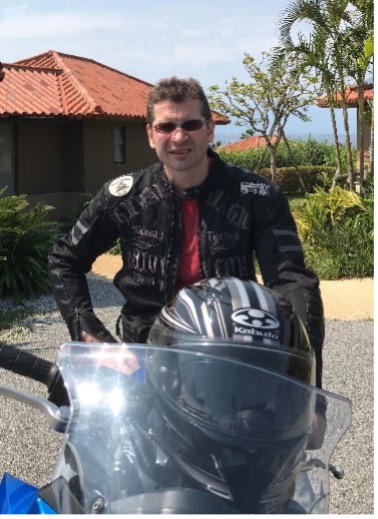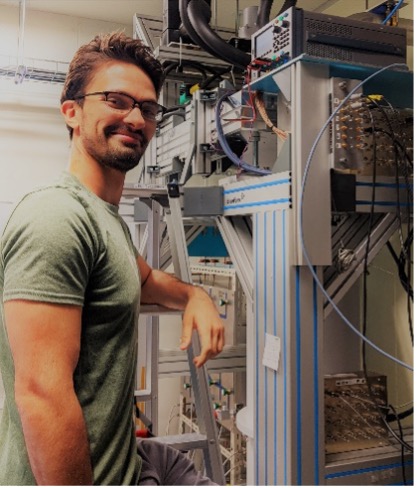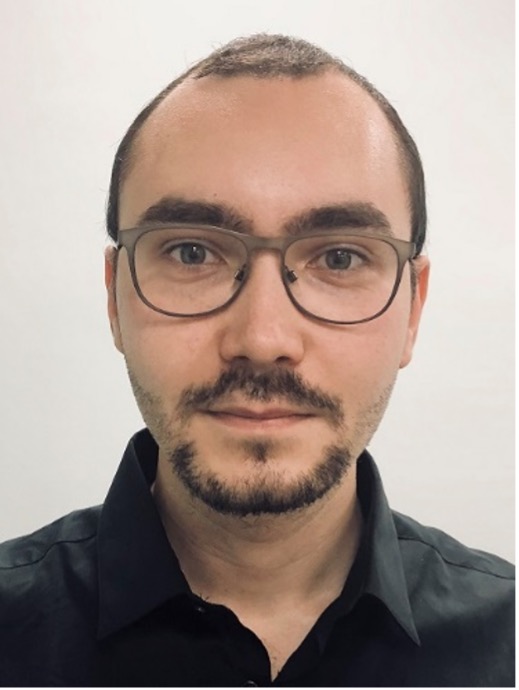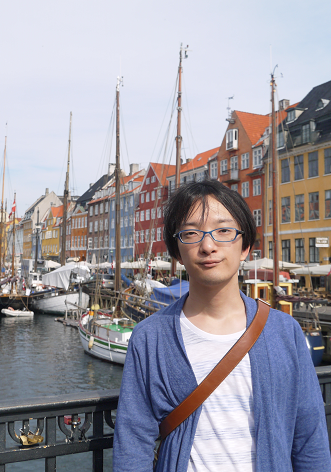Group Members
Principal Investigator
Denis Konstantinov
denis(‘at’oist.jp)
Professor
[January 2020-present]
Associate Professor
[July 2011-December 2019]
I got my Master degree in Physics from the Moscow Institute of Physics and Technology. For my master thesis, I worked in the Laboratory of Metastable Quantum States at Russian Center Kurchatov Institute, where I learned how to transfer liquid helium.
In 1997, I moved to USA to start my PhD in Physics from Brown University located in a beautiful town of Providence, RI. There, I worked on experiments with negative ions ("electron bubbles") in liquid helium under suprevision of Humphrey Maris, a great scientist for whom I have the utmost respect. Inspired by a Humphrey's idea, I tried to split an electron into pieces, but did not succeed.
After graduating Brown University in 2004, I moved to Japan and joined the Low Temperature Physics Lab as a postdoc under supervision of Kimitoshi Kono. There, I've learned about surface electrons on helium and spent next seven years in the Wako Campus of RIKEN working on various experiments with this wonderful system.
I joint OIST as a faculty member in 2011 to lead my own research group, the Quantum Dynamics Unit, where we do research on electrons on helium and other quantum system. In free time, I enjoy riding motocycle, practicing kickboxing and watching UFC fights.
Postdoctoral Scholars
Ivan Kostylev
ivan.kostylev(‘at’oist.jp)
Okinawa Institute of Science and Technology (Okinawa, Japan)
March 2020 - present
Postdoctoral Researcher, Physics
Studying the quantum dynamics, thermodynamics, and other physical properties of electron on helium system in the context of theoretical and applied science utilizing cryogenic refrigeration and vector magnet systems.
Kyoto University (Kyoto, Japan)April 2015 - March 2019
Doctor of Science, Physics
Applied uniaxial strain on nematic superconductor SrxBi2Se3. These results provide an inevitable step towards microscopic understanding and future utilization of the unique topological nematic superconductivity.
Dalhousie University (Halifax, Canada)May 2012 - August 2014
Master of Science, Physics
Developed apparatus for measuring the spatially resolved (spanning the sample diameter) axial shrinkage of resin-based composites in real time during photopolymerization using a high-speed camera and laser interferometry. This device was then used to study the shrinkage kinetics of the resin-based composites.
September 2006 - April 2011Bachelor of Science, Major Co-op in Physics
Worked on deconvolution algorithm for images generated by Digital Inline Holography. Also, on measuring Two-Magnon peak intensity dependence on doping of thin film La2-xSrxCuO4 by Raman spectroscopy.
I enjoy tackling challenging problems creatively utilizing my versatile skill set acquired over years of experience in research. During my free time I like to enjoy the nature, music, and exercise.
Mikhail Belianchikov
mikhail.belianchikov (‘at’oist.jp)
I started my physics education at the Department of General and Applied Physics of the Moscow Institute of Physics and Technology in 2010. During my bachelor education I spent a lot of time with Feynman diagrams and infinite data from the LHCb detector (CERN) in the beautiful XIX century manor of Institute of Theoretical and Experimental Physics.
After graduation I decided to get my hands dirty in experimental work and joined a Terahertz Spectroscopy Lab of Moscow Institute of Physics and Technology in 2014 for my master study. Here I got an occult knowledge of physics experiment, mainly in solid state spectroscopy, and having evaporated hundreds of liters of liquid helium, I defended my PhD thesis in condensed matter physics devoted to phases of electric dipole lattice of polar molecules.
I joined Quantum Dynamic Unit in December 2021 as a postdoc scholar to pursue a goal of reliable readout of spin states of a single electron, bound to the surface of liquid helium.
Besides science, I also get a lot of fun from mountaineering, mountain skiing and Lovecraft mythos board games.
Tomoyuki Tani
tomoyuki.tani(‘at’ oist.jp)
April, 2022 – present Postdoctoral scholar (OIST, Okinawa Institute of Science and Technology, Okinawa, Japan)
March, 2022 Doctor of Science, Physics (Keio University, Yokohama, Japan)
March, 2015 Master of Science, Physics (Keio University, Yokohama, Japan)
March, 2013 Bachelor of Science, Physics (Keio University, Yokohama, Japan)
I had studied the flow properties of superfluid helium 4 through nano- or micro-sized narrow channels, under Professor Keiya, Shirahama in Keio University. My experimental apparatus has a extremely high sensitivity to measure the tiny mass current. Until my graduation from master course, I developed the equipment and, in my Ph.D work, finally succeeded to reveal the nature of quantum phase transition of liquid helium 4 confined in a nanoporous material called Gelsil glass. It is that the system, even at finite temperatures, exhibits the quantum fluctuation significantly as well as the thermal fluctuation in classical phase transition.
Furthermore, I also fabricated a micro-sized channel, called micro-slit, using the semiconductor processing techniques. In the experiment of superflow through the micro-slit, the phase slip, a phenomenon induced by generation and motion of the quantum vortices in superfluid, were observed. Our micro-slit is also expected to be applicable to experiments of topological superfluid helium 3.
I am motivated to learn the new experimental techniques and utilize my experiences on handling liquid helium and cryostats as well as microfabrication for it.
Speaking about private things, I can play some instruments: Marimba, Viola and Piano (these two are in self-taught). I also like cooking some elaborate dishes. I spend my free time with these interests.
PhD Student







